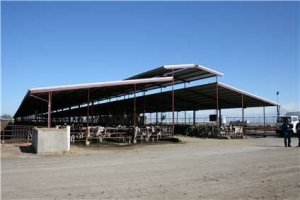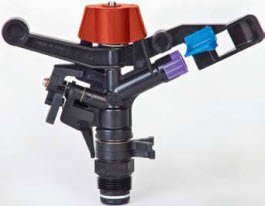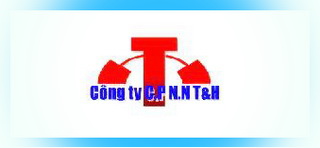The solution for medium and large scale farms
The Dairy Business Analysis Project: Florida Milk Production Costs, 1996

Integrity of Financial Information
Meaningful financial comparisons can only be made when reported data are verified. Dairies were classified into 'levels', which were determined by the amount and consistency of information they provided. Grouping into levels allowed some dairies to participate in the project even though their information was incomplete.
'Level zero' dairies had data that were missing or known to be inaccurate. These dairies were not included in any summary. 'Level one' dairies had most data reported, however, discrepancies in the numbers caused an imbalance in the statements of cashflows and owner's equity. Dairies classified as 'Level two' had owner's equity and cash imbalances of less than 10% when comparing beginning and ending balances. Farm Financial Standards Council recommendations were used for measuring farm financial position and performance. Only results summarized from 'Level two' dairies are in this report.
Methods of Comparison
Several differences existed in the 1996 economic climate compared to 1995. Table 1 lists revenues and expenses from dairies that submitted complete data for 1995 and 1996. The revenues reflect the record-high milk prices experienced in 1996. Gross milk revenues per cwt milk sold were $2.68 (17%) higher than 1995. However, purchased feed expense per cwt. milk sold also increased by $1.21 (16%) from 1995. Figure 1 displays all of the expenses by year.
A few dairies participating in 1996 did not participate in 1995 and Table 1 shows that seven more dairies in total participated in the 1996 summary. Results from the two years are based on slightly different samples of Florida dairies, and this must be remembered when comparing results.
Comparison of Dairies by Profit Group
Dairies were ranked and separated into groups by net farm income 1 (NFI) per cwt. milk sold for 1996 data. NFI was used to isolate the relative financial efficiency per unit of milk production from the underlying capital structure of the business. It also allowed comparisons among dairies of different size. It is a measure of profit adjusted by the pounds of milk sold. Dairies were averaged within 3 categories: the upper 25%, all, and lower 25%.
As is evident from Table 2 , profit groups did not differ by much in total revenues per cwt. milk sold. There was a $0.62 difference in milk receipts between the upper and lower profit group. The upper 25% group had $0.56 higher livestock receipts largely due to accrual inventory adjustments reflecting an increase in herd size during 1996. There was only a $0.31 difference in total receipts between the upper and lower 25% groups.
Table 3 points out a large difference in cost control among the profit groups. When compared with the lower profit group, the upper profit group had advantages in all of the expense categories except for personnel. Total expenses differed by $3.63 per cwt. milk sold between the groups. The largest difference was $2.21 in purchased feed expense. This is particularly significant when noting that the upper profit group sold 1,082 additional pounds of milk per cow compared to the lower group ( Table 5 ). The expenses across groups are shown in Figure 2 . With slightly higher receipts and dramatically lower expenses, the upper profit group had NFI per cwt. milk sold $3.95 higher than the lower profit group in 1996. With assets per cow similar ($3,999 and $4,096, Table 4 ), the rate of return on assets 2 (ROA) was 22 percentage points higher for the upper profit group. The reason the lower 25% group had a negative ROA with a positive NFI is due to a $50,000 charge for unpaid management in the calculation of ROA. In summary, the dairies that effectively controlled expenses in 1996 had higher profitability.
Heifer Raising
Whether or not heifers are raised on the farm affects the cost and capital structure of a dairy business. For this summary, heifer raisers had heifer numbers equal to or greater than 30% of their average cow inventory. Table 5 displays the expense categories for dairies that raised heifers compared to those that did not.
There was a $1.00 difference in NFI per cwt. milk sold between dairies that raised heifers and those that did not. Nonraisers had $0.45 higher total receipts, which was not caused by differences in heifer sales ( Table 6 ). For the nonraisers, personnel expense was $0.57 lower ( Table 5 ) which corresponded to 30 more cows per full-time equivalent 3 (FTE) ( Table 6 ). Purchased-feed expense was $0.91 lower for nonraisers. Conversely, heifer raisers had $1.48 lower livestock expense than nonraisers, most of which was due to a $1.74 lower replacement cost ( Table 6 ). Figure 3 shows the differences between groups for all expense categories. Culling rate 4 was 5 percentage points higher for heifer raisers compared with nonraisers.
With the above difference in cost structure, there was a difference in profitability. The ROA for nonraisers was 2 percentage points higher. Nonraisers also had a smaller capital base with $749 less invested per cow in total assets ( Table 6 ). The operating profit margin 5 was 3 percentage points higher for nonraisers.
In the 1995 financial data summary, there was little difference in profitability between raisers and nonraisers. Also, it is important to note that some of the most profitable dairies participating in the project raised heifers. As with any enterprise, however, if not done well, a heifer enterprise can reduce overall profitability.
Regions
Another significant factor affecting financial performance was the region of Florida in which the dairy was located. For this summary, the dividing line between North and South groups was Interstate-4 running between Tampa and Orlando ( Figure 4 ). Table 7 shows the expense categories for the two regions and Table 8 provides some additional information about the dairies, including profitability.
Dairies in the South received $0.79 per cwt. milk sold more in total receipts. Northern dairies sold 1,399 more pounds per cow and had herds with 348 fewer cows. Total expenses per cwt. milk sold were nearly identical although differences existed in the individual categories. Purchased feed expense per cwt. milk sold was $0.55 higher for the North group. Livestock expenses were $1.18 higher for the South group. The largest line-item expense difference was heifer replacement cost, which was $1.27 higher in the South. Milk hauling expense per cwt. was $0.10 lower in the South.
When looking at profitability, the two groups posted similar results for 1996. The ROA between the two groups differed by 2 percentage points ( Table 8 ). However, the North had $302 more invested per cow, was 6 percentage points lower in the asset turnover ratio, and had similar operating profit margin ( Table 8 ).
Milking Frequency
Table 9 shows expenses and NFI per cwt. milk sold for twice (2X) and three times (3X) daily milking groups ( Figure 5 ). Net farm income per cwt. milk sold was $1.09 higher for the 2X group. There was not a large difference in total receipts per cwt. milk sold ($19.94 vs. $19.91 for 2X and 3X groups, respectively). However, several differences in production and expenses should be noted ( Table 10 ).
The 3X group sold 3,791 more pounds per cow on average than the 2X group. This is a 27% increase over the 2X group, which suggests that the dairies included in the 3X group were driving the increase rather than it being caused by a difference in milking frequency. This difference was too great to be explained by 3X alone.
Several expenses also differed between the groups. Personnel expenses were $0.25 per cwt. milk sold lower and machinery expenses were $0.35 lower for the 2X group. Purchased feed expenses were also $0.31 lower for the 2X group. With the large difference in milk sold per cow, it is difficult to attribute large differences in cost structure to milking frequency.
Capital structure differed between the two groups. The 2X group had 223 fewer heifers with comparable numbers of cows ( Table 9 ) suggesting that these dairies raised fewer heifers and had lower purchased feed costs accordingly. Total assets per cow for the 3X group was $1,158 higher (33%) than the 2X group. This, in combination with lower expenses per cwt. milk sold for the 2X group, resulted in ROA 2 percentage points higher.
Labor Efficiency
Large differences exist among participating DBAP dairies in apparent labor efficiency. Some of the reasons for differences are differences in enterprises on the dairy and the physical make-up of the layout and facilities. Table 11 shows selected labor efficiency and profitability information by separating dairies into groups on the basis of pounds milk sold per full-time equivalent worker (FTE).
There is a positive relationship between pounds milk sold per FTE and profitability. The highest labor efficiency group had a ROA of 0.14 while the middle and lower groups had a ROA of 0.08 and 0.05, respectively. This difference was largely the result of the high labor efficiency group having better cost control, and this resulted in a higher operating profit margin while having comparable total receipts per cwt. milk sold ( Table 11 ).
Differences in the pounds milk sold per cow can also cause a difference in labor efficiency. However, by examining the 1996 data, the middle efficiency group had the highest herd production level (18,535 pounds milk sold per cow), followed by the upper group (14,990 pounds milk sold per cow) and the lower group (14,856 pounds milk sold per cow).
An important factor was the number of cows per FTE. The upper group had more than twice as many cows per worker (83 and 40 cows per FTE for the upper and lower groups, respectively ( Table 11 ). The middle group had 46 cows per FTE, which limited its labor efficiency measured as pounds milk sold per FTE even with much higher production per cow.
Capital Efficiency
There was a wide degree of variability in the profitability of DBAP dairies. Dairies were sorted by the rate of return on assets (ROA) to examine the factors influencing the differences in this measure of profitability. Table 12 shows these findings and documents how effectively capital was utilized on Florida dairies.
The upper profitability group (>9% ROA) had financial advantages in nearly all performance categories. Cost control was evident in the upper group which had an operating profit margin of 0.17 compared to the middle (1-9% ROA) and lower (<1% ROA) groups with 0.09 and -0.02, respectively ( Table 11 ). This means that for the upper profitability group every dollar of gross revenues contributed 17 cents to net farm income compared to a 2 cent loss for the lower group.
The difference in capital efficiency can be seen in differences in the asset turnover ratio, a measure of how effectively invested dollars generate gross revenues. The upper profitability group had an asset turnover ratio of 0.93 in 1996. This means that every dollar invested in the business generated 93 cents in gross revenues. The middle group had a much lower asset turnover ratio of 0.69 while the lower profitability group had an asset turnover ratio of 0.88.
The most significant factor influencing capital efficiency, assuming similar levels of cost control, is the level of investment measured by total assets per cow. The upper profitability group had $59 fewer assets per cow invested than the middle profitability group and $430 fewer than the lower profitability group. With 526 more cows than the middle profitability group, and 905 more cows than the lower group, the upper profitability group achieved better performance from a larger asset base ( Table 12 ).
Other factors can influence the degree of capital efficiency. The high profitability group sold 3,391 and 2,645 more pounds milk per cow than the middle and lower profitability group respectively ( Table 12 ). The upper and middle profitability groups also had high levels of labor efficiency with 62 and 63 cows per FTE respectively ( Table 12 ).
Per Cow Balance Sheet
Balance sheet information is useful for comparing dairies with different asset structures. The information in Table 13 represents the average per cow balance sheet information on January 1 and December 31, 1996. Asset structure did not change much from beginning of the year to the end. The average investment per cow increased $246, mainly due to increases of $22 in feed and supplies, $42 in accounts receivable, $42 in prepaid expenses, and an $85 increase in the value of dairy cows (all on a per cow basis) (see Table 13 ). Overall, 44% of all assets are composed of real estate, 33% in livestock, and 13% made up of current assets. All assets were recorded at fair market value.
Notes
1. Net farm income is defined as accrual receipts minus accrual expenses. This represents the return to unpaid labor, management, and capital.
2. Rate of return on assets is calculated by adding interest expense to net farm income, subtracting a $50,000 charge for unpaid management, and dividing the remainder by average total assets.
3. A full-time equivalent is equal to one person working 230 hours per month. This accounts for all labor and management, paid or unpaid.
4. Culling rate is determined by dividing the number of cows leaving the herd by the average herd size for 1996.
5. Operating profit margin is determined by adding interest expense to net farm operating income, subtracting a $50,000 charge for unpaid management, and dividing the remainder by ending total assets.
Tables
|
Table 1. Selected statistics from participating DBAP dairies for 1995 and 1996. |
|||
|
1995 |
1996 |
||
| Number of dairies | 11 | 18 | |
| Number of cows | 1,914 | 1,048 | |
| Number of heifers | 1,238 | 508 | |
|
Milk sold per cow (pounds) |
15,853 | 15,887 | |
| Revenues (per cwt. milk sold) | |||
| Milk sales | 15.51 | 18.19 | |
| Cow sales | 0.75 | 1.05 | |
| Calf sales | 0.18 | 0.31 | |
| Other livestock | 0.04 | 0.09 | |
| Crops | 0.26 | 0.05 | |
| Government receipts | 0.01 | 0.04 | |
| Custom work | 0.00 | 0.07 | |
| Other receipts | 0.29 | 0.13 | |
| Total revenues | 17.03 | 19.93 | |
| Expenses (per cwt. milk sold) | |||
| Personnel | 2.79 | 2.38 | |
| Purchased feed | 7.41 | 8.62 | |
| Crops | 0.31 | 0.24 | |
| Machinery | 0.79 | 0.70 | |
| Livestock | 2.08 | 2.51 | |
| Marketing | 1.32 | 0.94 | |
| Real estate | 0.48 | 0.44 | |
| Other | 1.63 | 1.22 | |
| Depreciation | 1.71 | 0.73 | |
| Total expenses | 18.51 | 17.79 | |
| Net farm income (per cwt. milk sold) | -1.48 | 2.14 | |
|
Table 2. Revenues by profit group1 for 1996. |
|||
|
Category |
Upper 25% |
All Dairies |
Lower 25% |
| Number of dairies | 5 | 27 | 5 |
| Milk sales | 18.39 | 18.19 | 17.77 |
| Cow sales | 1.51 | 1.05 | 0.95 |
| Calf sales | 0.14 | 0.31 | 0.45 |
| Other livestock |
0.11 |
0.09 | 0.08 |
| Crops | -0.07 | 0.05 | 0.16 |
| Government receipts | 0.03 | 0.04 | 0.05 |
| Custom work | 0.00 | 0.07 | 0.24 |
| Other receipts | 0.06 | 0.13 | 0.16 |
| Total revenues | 20.17 | 19.93 | 19.86 |
|
1 Upper and lower 25% are based on net farm income per cwt. milk sold. |
|||
|
Table 3. Expenses by profit group1 for 1996. |
|||
|
Category |
Upper 25% |
All dairies |
Lower 25% |
| Number of dairies | 5 | 18 | 5 |
| Total revenues | 20.17 | 19.93 | 19.86 |
| Personnel | 2.37 | 2.38 | 2.22 |
| Purchased feed | 7.65 | 8.62 | 9.86 |
| Crops | 0.23 | 0.24 | 0.35 |
| Machinery | 0.39 | 0.70 | 0.92 |
| Livestock | 2.63 | 2.51 | 2.80 |
| Marketing | 0.83 | 0.94 | 0.92 |
| Real estate | 0.55 | 0.44 | 0.57 |
| Other | 0.83 | 1.22 | 1.44 |
| Depreciation | 0.59 | 0.72 | 0.62 |
| Total expenses | 16.07 | 17.79 | 19.70 |
| Net farm income2 | 4.11 | 2.14 | 0.16 |
|
1Upper and lower 25% are based on net farm income per cwt. milk sold. 2Net farm income is computed by subtracting accrual adjusted expenses from accrual adjusted receipts. This represents the return to unpaid management, ownership, and assets. |
|||
|
Table 4. Descriptive statistics by profit group1 for 1996. |
|||
|
Category |
Upper 25% |
All dairies |
Lower 25% |
| Number of cows | 1,328 | 1,048 | 652 |
| Number of heifers | 370 | 508 | 232 |
| Milk sold per cow (pounds) | 15,359 | 15,887 | 14,277 |
| Cull rate | 0.32 | 0.33 | 0.39 |
| Assets per cow | 3,999 | 4,069 | 4,096 |
| Rate of Return Assets2 | 0.20 | 0.09 | (0.02) |
|
1 Upper and lower 25% are based on net farm income per cwt. milk sold 2Rate of return on assets (ROA) is calculated by adding interest expense to net farm income, subtracting a $50,000 charge for unpaid management, dividing the remainder by average total assets. |
|||























